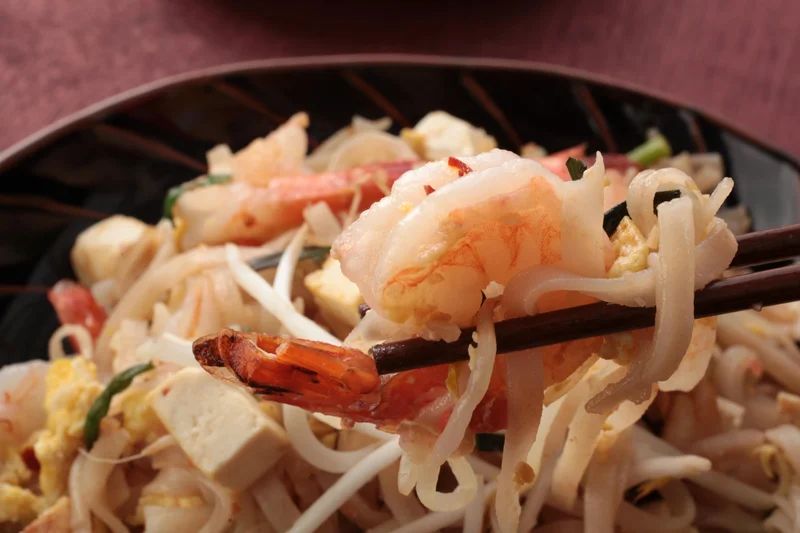Served at street stalls, pad thai is the iconic dish of Thailand. Noodles and stir-frying were brought over from China and combined with the four flavors of Thai cooking: salty, sweet, sour, and spicy. Pad thai is an easy but fast-moving dish, so have everything chopped and ready to go before you begin. Ingredients like palm sugar, tamarind pulp, and fish sauce might scare people away, but they shouldn’t—they’re sold at most Asian grocers, and they make this dish as authentic as it comes.
Special equipment: Nonstick tongs, chopsticks, or two wooden spoons are useful for tossing the ingredients together to finish—metal utensils can scratch your pan.
This recipe was our featured Gateway Dish for Thailand.
For more, we recommend you learn How to Make Sweet and Sour Sauce with our easy recipe.
- Yield: 2 to 4 servings
- Difficulty: Easy
- Total: 45 mins
Ingredients (18)
- 7 ounces medium dried rice stick noodles
- 5 tablespoons water
- 2 tablespoons tamarind paste or pulp (about 1 ounce)
- 2 tablespoons fish sauce
- 2 tablespoons finely chopped palm sugar (packed light brown sugar can be substituted)
- 12 large shrimp, peeled, deveined, tails left on
- 3 tablespoons vegetable oil
- Salt
- 1 cup 1/2-inch-dice extra-firm tofu (about 5 ounces)
- 2 medium garlic cloves, minced
- 10 Chinese chives, cut into 1-inch pieces
- 1 tablespoon finely chopped dried shrimp
- 1 tablespoon finely chopped preserved radish
- 1 to 3 dried Thai chiles, finely chopped (or 1/2 to 1 teaspoon red pepper flakes)
- 1 1/2 cups bean sprouts (about 3 ounces)
- 2 large eggs, lightly beaten
- 2 tablespoons finely chopped roasted, salted peanuts
- 1 lime, quartered
Instructions
- Bring a large saucepan of water to a boil over high heat. Remove from the heat, add the noodles, and stir briefly to separate them. Soak the noodles until they’re loose and pliable, about 5 minutes. Drain and set aside.
- Meanwhile, place the measured water and tamarind in a small bowl and stir to combine, pressing on the paste to break it up. Let sit until softened, about 8 minutes. Strain the mixture through a fine-mesh strainer into another small bowl, pressing on the solids to extract all the juice. Discard the solids. Add the fish sauce and palm sugar and stir to combine; set aside.
- Cut each shrimp along its back without cutting completely through, so it opens like a butterfly; set aside.
- Heat 1 1/2 tablespoons of the oil in a wok or large nonstick frying pan over medium-high heat until shimmering. Add the shrimp, season with salt, and stir-fry, tossing continually until the shrimp are pink and just cooked through, about 3 minutes. Transfer to a plate and set aside.
- Place the remaining 1 1/2 tablespoons oil in the wok, add the tofu, season with salt, and stir-fry until the tofu starts to brown, about 1 minute. Transfer to the plate with the shrimp and set aside.
- Add the garlic to the wok and stir-fry for a few seconds. Add the reserved noodles and half of the chives and stir-fry for a few seconds more. Pour in the reserved tamarind mixture, stir to combine, then add the dried shrimp, radish, chiles, and half of the bean sprouts. Stir-fry until the noodles are coated with sauce, about 1 to 2 minutes.
- Push the noodles to the side of the wok, pour the eggs into the free space, and scramble with a rubber spatula until almost cooked through, about 1 minute. Add the reserved shrimp and tofu and the remaining chives and toss all the ingredients together until combined, about 1 minute. Transfer to a serving platter and garnish with the remaining bean sprouts, peanuts, and lime wedges.


